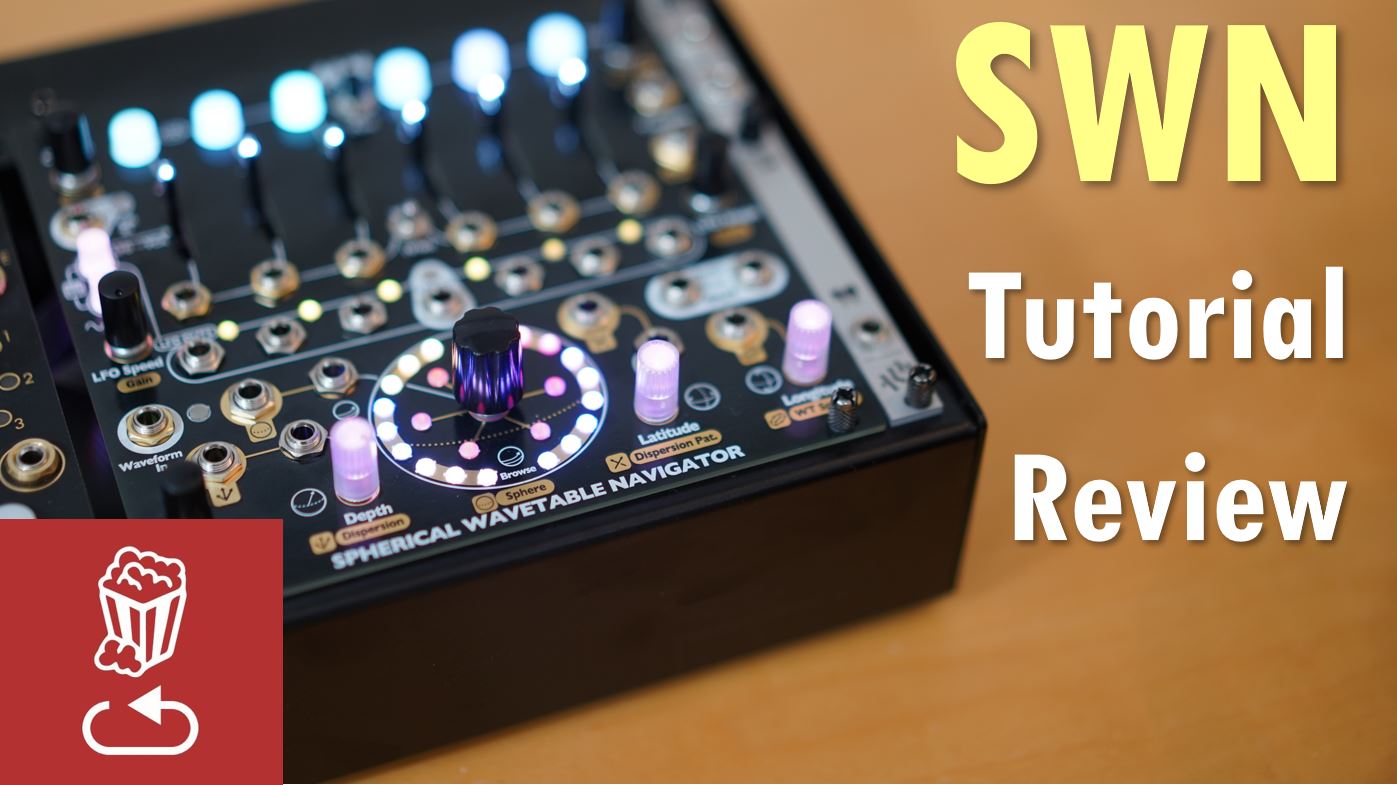SWN – Spherical Wavetable Navigator – is a six voice stereo wavetable synth, and what makes it special is the way it stores wavetables and the “spherical” way it moves between them.
Typical wavetable synths morph between a series of wavetables in a linear fashion. SWN is different – it stores its 27 wavetables in a 3x3x3 cube and lets you “glide” in 3D space morphing from one shape to the other. It’s called Spherical because motion in any direction in space eventually loops back to the same location.
Sphere Edit
SWN comes with companion software called Sphere Edit, which lets you load, create, edit and apply effects to all 27 waveforms, try out the various motions in space and export the final wavetable “Sphere” to SWN.
Overview
SWN has six voices – each has their own independent level control. By default, each voice (or wavetable oscillator) loads with the same Sphere, but you can load up a different Sphere into each voice.
SWN comes with 12 pre-populated Spheres, and you can store an additional 108 Spheres on the internal memory.
You control the levels of each of the oscillators using the six faders, and you can transpose them together either by octaves or semitones using dedicated knobs.
If you use the two outputs SWN will hard pan half the oscillators left and half right.
Each of the encoders has a secondary function accessible by pushing it in and then turning it. The main function is written above the encoder and the secondary push function is written under it.
Channel control
Twisting and turning the knobs applies globally to all 6 voices/channels, however, if you hold a channel button while twisting a knob, those changes will only apply to that particular channel.
Browsing the Sphere
The easiest way to browse through the wavetables in a sphere is by using the Browse encoder.
You can also browse through the Sphere by using each of the Depth, Latitude and Longitude knobs.
You can tell where you are in the cube using the color of the ring of LEDs in the middle. Their red color component increases as you increase depth, they get greener as you increase latitude, and bluer as you increase longitude.
Points in between are a mixture of these colors and when’re they all have the same amount, the whiter and brighter the colors get.
We can swap out the current Sphere by holding and turning the Browse encoder, and you can swap out spheres on a per channel basis by holding the channel and turning the browse knob.
Dispersion lets you spread out the 6 voices across the sphere, allowing you to browse different locations simultaneously.
Chords
By default, the oscillators play the same note, but you can spread those notes apart into various built in chord shapes using the Spread function, and combing that same knob with the fine tune button lets you slightly detune the oscillators.
You can also pitch the individual oscillators separately by holding an oscillator’s button and turning the transpose button and create your own custom chords.
LFOs
SWN also has 6 LFOs built in, with 25 color codes LFO shapes with individual control over LFO gain, speed, phase and shape. Each of the LFOs has its own output jack or patching to SWN or other external modular gear.
The LFOs can be used as one-time envelopes as well, triggered by CV changes in their inputs or by pressing the channel buttons.
Recording Spheres
Aside from using the build in 12 waveforms and creating waveforms on a computer using SphereEdit, you can also sample your own waveforms directly into SWN.
Waveforms are sampled into a 2.5 second recording buffer, and various waveform effects can be applied to any of the 27 slots.
Presets
The sampled waveforms as well as any other module settings can be saved to any of 108 available slots. Saving and loading up presets is quite easy with the inner circle of leds designating preset banks and the outer circle specific preset slots.
Summary
SWN is a powerful module and with power, as usual, comes complexity. There are quite a few button combos that are going to be hard to remember initially, so the supplied cheat sheet is necessary and should be kept handy. It does start to come together after a while though.
The easiest way to simplify SWN initially is just to ignore the LFOs and sphere recording and focus on playing the sphere. Just loading up chords and looking around for sweet spots in a sphere is something I found quite enjoyable.
Once you’re familiar with that you’ll want to start modulating things, and that’s where the LFOs will become quite handy, and eventually you might want to venture out to create your own wavetables either by recording them directly or using the companion software.
Timeline
Here’s a timeline of the companion video:
0:00 Intro
0:50 How Wavetables work
1:10 Sphere Edit
2:10 Drawing waveforms
3:00 1D, 2D and 3D morph
6:45 Waveform effects
7:10 Panel layout
8:55 Fine tuning
9:30 Push functions
10:05 Editing channels
11:10 Spherical navigation
12:35 Dispersion
13:40 Using v/oct CV
14:30 Polyphonic control
16:00 The LFOs
17:35 LFO to VCA
19:55 Audio rate LFOs
20:35 LFO gate/trig modes
22:05 LFOs as envelopes
23:15 Note & Keyboard modes
23:40 Scales
24:30 Sampling spheres
25:20 Waveform effects
25:50 Presets
26:20 Pros and cons
